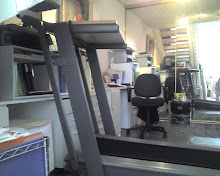I'm perplexed. Why would a techie use the FAST tool to restore a legacy system which is running so poorly as to be suspect of either OS corruption or hopelessly infected?
As an example, take this laptop-centric client; she travels extensively and thus works exclusively from a laptop. This lovely creature, let's call her Dana, has much better things to with her time than be an expert with computers. Interestingly, during her travels, when she needed computer help to reformat or upgrade, no one had the brains or balls to denied this lovely lady her request to replicate the old system on a new laptop because she lacked original disks of her software applications.
The results: Her last two laptops have evidence of an unholy amalgamation by bringing over that which should have been left behind. Given her travels, logic follows that this would have to be the work of unrelated pseudo-techie characters seemingly with instinctual co-conspiratorial intent, to engineer this cyber-monstrosity which crawls slower than a centipede.
As luck would have it, she accidentally dropped the latest laptop on it's head and cracked the case. I"m thrilled she's got a new notebook for her birthday. Hopefully she's not feeling another year older, just wiser. My birthday wish for her is that she's no longer besieged by well meaning but still questionable technical assistance.
Most folks realize that it's important to have original software CDs or equivalent. My advise is to make sure you save your downloads or have the latest versions of your favorite applications somewhere.
Do not just copy the folder from your C:\Program Files – THIS WILL NOT WORK AND HAS NOT WORKED SINCE DOS DAYS!!! You must have the original setup files to correctly invoke the dynamic link libraries during application installation.
The moral of the story: Prepare for your evolutions. When you purchase applications, get a CD. Or if you buy online, download the application to a reliable location to a dedicated folder named Downloads, or My Downloads for archival purposes. Go one better and create a new folder for each application; label it with the software version. Other best practices, save the license key codes in a text file under the same folder. Always.
FAST has its purposes. Here's a bit more of information regarding FAST, Files and Settings Transfer Tool (XP/Vista/System7). This wizard can be configured to backup specific data. While it is usually reliable, it isn't foolproof if you are considering reformatting due to a damaged system.
You can find this wiz at Start Menu -> All Programs -> Accessories -> System Tools.

FAST is not suitable for user friendly back-up purposes. It compiles all of the data in a series of humongous files. Unless you want to extract all of the files and folders, use a file by file type of back-up. Because you wouldn't want to restore the whole computer just to retrieve a certain file. Best practice for either backup is to use a large storage media, either a CD or external hard drive. Better yet, step back and look at your system from a disaster recovery standpoint. My mantra: Redundancy in terms of media as well as location. Look for an online repository for your backups especially if you have mission critical data.
FAST is possible to use the wizard to transfer the settings and files from one user account to another. You can individually select either or both files and settings. However, in my experience, this isn't a quickie task for Windows.
Bottom line: Get an easy backup tool which gives you auto backup features. Set it; but don't forget it.
For further reading, here's a great source of information: Optimizing PC - Backup Data





No comments:
Post a Comment